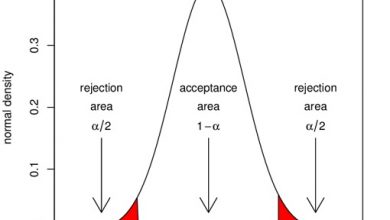What are Variables in research types dependent Independent
Identifying the variables in scientific research is the starting point for developing a study, be it a monograph, dissertation, thesis or scientific article.
Science has three essential levels: the observation of facts or phenomena, the elaboration of hypotheses and the creation of theories, which is based on the validation of sustainable hypotheses. In passing between the first and second levels, the researcher needs to define his variables.
After formulating the problem , define the objectives , building hypotheses and taking care of the design, it is necessary to operate the concepts and variables.
The variable is the researcher’s measure . Therefore, it is essential to discover the role it plays in the investigation (dependent or independent) and its classification (qualitative or quantitative).
What are research variables?
The variable term refers to a characteristic of interest to be studied in each research element. The list includes qualities, attributes, values , among other measures and data that the researcher wants to measure.
A variable can be thought of as a rating or measure; an amount that varies; an operational concept, which contains or presents values; aspect, property or factor, discernible in an object of study and subject to measurement.
LAKATOS; MARCONI, 2003, p. 137
Look at the diagram below to better understand what the variables are for:
dependent variables
What did you measure in the survey? Answer the question and you will have your dependent variable. In other words, this work item is any and all measured data.
The name “dependent” is not for nothing. It reinforces the idea that the variable is conditioned to a grouping variable , that is, an independent variable.
Example:
Cholesterol and glycemia indices of a certain group of patients.
Independent variables
The independent variable works as a grouping quantity , that is, it divides the study sample into subgroups.
Example 1:
A research that evaluates the consumption of red fruits divided the sample into diabetics and non-diabetics.
variable types
There are four types of variables. Are they:
Qualitative variables
Qualitative variable is any attribute that is evaluated within a work, as long as it is not associated with numerical values. It is a determining factor for the success of qualitative research .
Nominal Qualitative
It encompasses attributes and characteristics, without following an order .
Example:
A Marketing student created a questionnaire to be applied to a group of consumers. The first question was closed and about gender. Each respondent has to tick male or female.
Ordinal Qualitative
It’s still a quality, just that it follows an order that has relevance to the research procedure.
Example 1:
A dentistry student decided to apply a questionnaire to a certain sample of patients. In one of the questions, he measures the degree of pain, putting four degrees of intensity as alternatives: mild, moderate, severe and profound. They are characteristics, but they follow an increasing order that makes perfect sense in statistical analysis.
Example 2:
The question about schooling, which frequently appears in the questionnaires, is also an example of an ordinal qualitative variable. This is because it follows a growing order: Elementary Incomplete; Elementary Complete; Medium Incomplete; Medium Complete; Incomplete higher; Graduated; Incomplete Postgraduate and Complete Postgraduate.
Quantitative variables
The quantitative research variable is always expressed in numbers, which can be fractional or whole.
Continuous Qualitative
It encompasses fractional measurements . In the interval between two values, there are infinite possibilities.
Example:
A Nutrition student wants to know more about his sample, so he created a question that asks the weight and height of each respondent.
Discrete Qualitative
The discrete qualitative variable follows an opposite logic to the continuous one. That is, between two values, there are not several possibilities. Numbers are always integers .
Example:
In order to know the family composition of the sample, the student included a question about the number of children in the questionnaire. The answer will always be a whole number, after all, there’s no way to have two and a half children.
After operationalizing the variables, it is necessary to move on to the next stages of the research, which are sample selection, preparation of data collection instruments, data collection , analysis and interpretation of results and, finally, writing the report.
